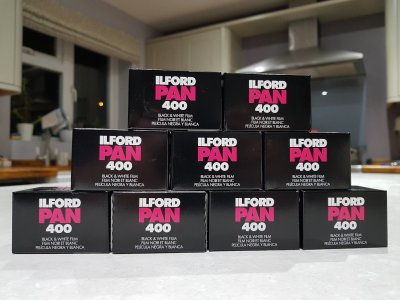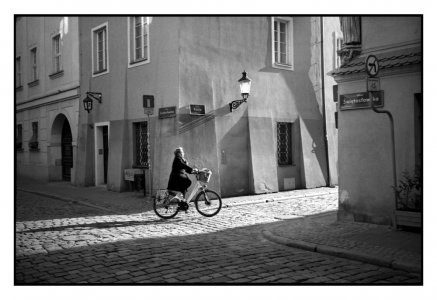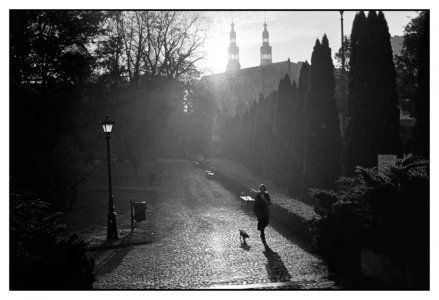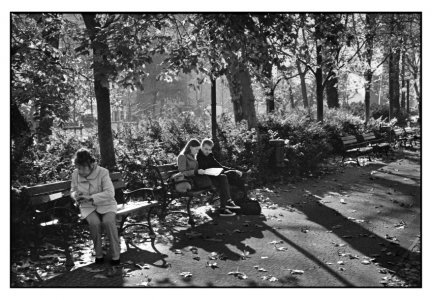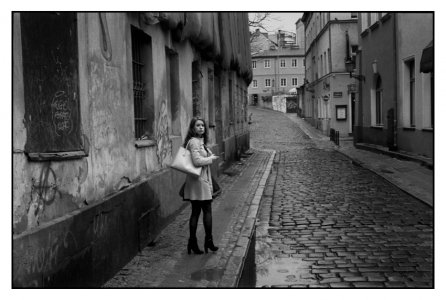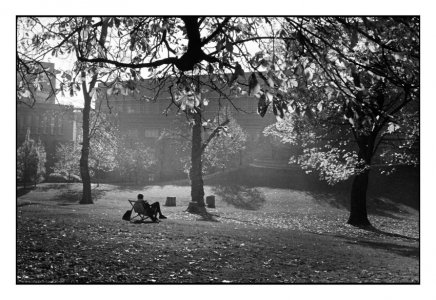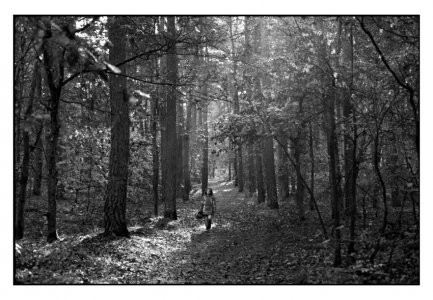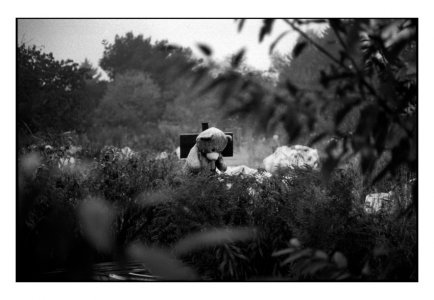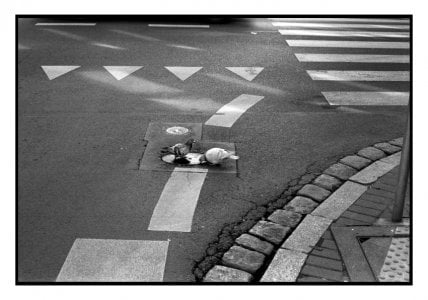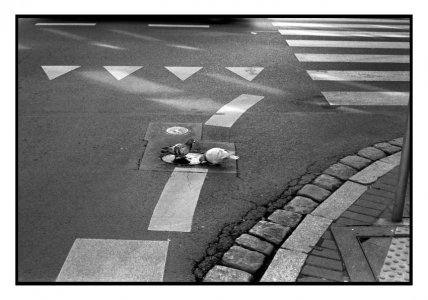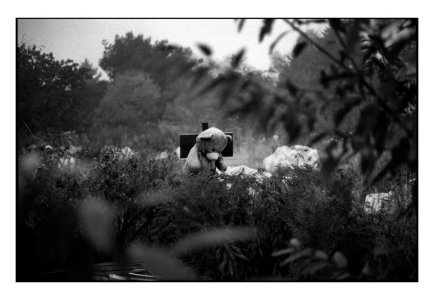Coldkennels
Barnack-toting Brit.
I've been shooting a lot of Rollei Retro 400S lately (supposedly repackaged Aviphot Pan 200) - totally clear base.Films with a clear base are said to be better for scanning, but as always much depends on exposure and developing.
Scanning it was a nightmare at first; retaining any tonality in highlights requires the use of the SFX "negafix" profile in SilverFast 8 to flatten everything down. It didn't help that the Massive Dev Chart's recommended times for developing it in LC29 1+19 are twice as long as the datasheet recommends (which is still 30sec longer than needed, in my experience). It's a fiddly bugger to work with, but I'm finally getting everything dialled in to get results I like.
Prints lovely, though. Very little work, very quick exposures.
XP2 is very much the opposite: the base is so dark and purple that printing is an utter nightmare, with prints often needing about a minute of exposure for an 8x10" print at f/8. (Rollei Retro 400S will make similar prints from similarly exposed negatives in ~10 seconds, for reference). Sometimes it needs a +4 or +5 filter to get to where I want it in the darkroom. But scanning? Easy. Dev it in C41 and you can use dust removal tools, dev in Rodinal and you lose that option but you get good tonality with no tweaks.
If I was only scanning I'd use XP2 all day, to be honest.
Fomapan 100 is one of the few films I've found that seems to "just work" in both workflows, for what it's worth. I love that film.
Kai-san
Filmwaster
I've been shooting a lot of Rollei Retro 400S lately (supposedly repackaged Aviphot Pan 200) - totally clear base.
Scanning it was a nightmare at first; retaining any tonality in highlights requires the use of the SFX "negafix" profile in SilverFast 8 to flatten everything down. It didn't help that the Massive Dev Chart's recommended times for developing it in LC29 1+19 are twice as long as the datasheet recommends (which is still 30sec longer than needed, in my experience). It's a fiddly bugger to work with, but I'm finally getting everything dialled in to get results I like.
Prints lovely, though. Very little work, very quick exposures.
XP2 is very much the opposite: the base is so dark and purple that printing is an utter nightmare, with prints often needing about a minute of exposure for an 8x10" print at f/8. (Rollei Retro 400S will make similar prints from similarly exposed negatives in ~10 seconds, for reference). Sometimes it needs a +4 or +5 filter to get to where I want it in the darkroom. But scanning? Easy. Dev it in C41 and you can use dust removal tools, dev in Rodinal and you lose that option but you get good tonality with no tweaks.
If I was only scanning I'd use XP2 all day, to be honest.
Fomapan 100 is one of the few films I've found that seems to "just work" in both workflows, for what it's worth. I love that film.
I always expose the Retro 400S at ISO 200 and process it in Rodinal as ISO 400. I think you can even expose it at ISO 100 with good results. I tried to process it in XTOL first, but I found it quite hopeless.
d_c
Established
Ilford XP2 would probably be my choice if the end intention was for the negative to be scanned, as chromogenic films allow transmission of an infrared pass for something like Digital ICE automatic dust spotting, which is not possible with silver based B&W film.
Coldkennels
Barnack-toting Brit.
Getting off topic a bit, but...I always expose the Retro 400S at ISO 200 and process it in Rodinal as ISO 400. I think you can even expose it at ISO 100 with good results. I tried to process it in XTOL first, but I found it quite hopeless.
I shoot Rollei Retro 400S at 400 ISO (despite the fact it's a "200 ISO" aerial surveillance film), metering for the shadows. First couple of rolls I did in Rodinal 1+50 and it came out mostly good, but a tad grainy and underexposed:
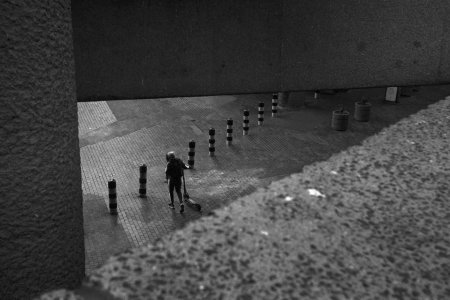
(Rollei Retro 400S in Rodinal - it doesn't look too bad here to be honest, but the results are very situational on the lighting and range of tones in the scene)
So then I moved to LC29 1+19 to try to get more "speed" out of it and smoother grain. I'll spare you the results using MDC's times (12:00 is far too much!), but here's it at 6:30 with "standard" agitation of 15 sec. per minute:
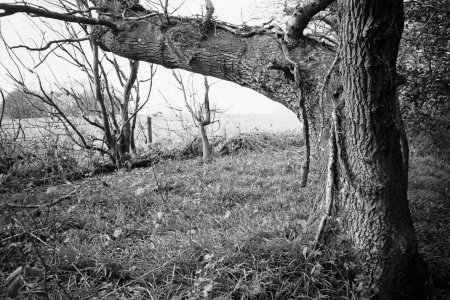
(Rollei Retro 400S in LC29 1+19, 6:30 at 20ºC as per the datasheet, 15 sec. agitation per minute. Too much contrast, highlights consistently blown out.)
So finally I dialled it in with a slightly reduced dev time and less agitation, and now I get more consistent tonality in all scenes with much less grain than I had in Rodinal:
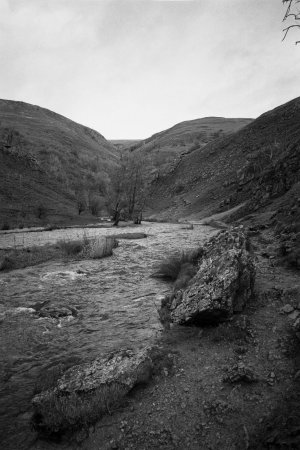
(Rollei Retro 400S in LC29 1+19, 6:00 at 20ºC, 10 sec. agitation per minute. This works for me - I didn't even adjust the levels in post.)
Kai-san
Filmwaster
I've never used LC29, but this one looks good.So finally I dialled it in with a slightly reduced dev time and less agitation, and now I get more consistent tonality in all scenes with much less grain than I had in Rodinal:
View attachment 4831391
(Rollei Retro 400S in LC29 1+19, 6:00 at 20ºC, 10 sec. agitation per minute. This works for me - I didn't even adjust the levels in post.)
ChrisPlatt
Thread Killer
Based on reviews here and elsewhere I increased my order to 6 rolls 135-36 Ilford Pan 400 and 4 rolls 135-36 Ilford Pan 100 film.
Chris
Chris
Coldkennels
Barnack-toting Brit.
Thanks. LC29 is basically just an HC-110 clone - slightly more diluted and easier to work with. It's been my go-to for fast (400 ISO+) film for years.I've never used LC29, but this one looks good.
p.giannakis
Pan Giannakis
Alpsman
Well-known
My film dealer for decades told me that the PAN 400 is in our country only intended for commercial customers and that the HP5 is actually the same film. He has this film on offer because he sells it to various commercial companies.
I develop the film in Ilfosol 3 between 6.5 and 7 minutes, like the HP5 used to be. The negatives may seem a bit dull to some, but they are ideal for scanning. No drowned shadows and no burn out lights.
I develop the film in Ilfosol 3 between 6.5 and 7 minutes, like the HP5 used to be. The negatives may seem a bit dull to some, but they are ideal for scanning. No drowned shadows and no burn out lights.
Alpsman
Well-known
Her one can order PAN 100 and PAN 400

 www.fotofachversand.com
www.fotofachversand.com

 www.fotofachversand.com
www.fotofachversand.com

Ilford Pan 100 / 135-36 - www.fotofachversand.com - Foto Riegler KG, 6,40 €
Schwarzweißfilm, panchromatisch sensibilisiert, für feinkörnige und scharfe Negative

Ilford Pan 400 / 135-36 - www.fotofachversand.com - Foto Riegler KG, 6,40 €
Schwarzweißfilm, panchromatisch sensibilisiert, hohe Empfindlichkeit, enormer Belichtungsspielraum
Share:
-
This site uses cookies to help personalise content, tailor your experience and to keep you logged in if you register.
By continuing to use this site, you are consenting to our use of cookies.


